
Memory has practical, intellectual and emotional uses. We talk about our memories – both happy and sad, as well as incidental – in order to build an autobiographical picture, for ourselves and others, of how we became who we are. We also ‘remember’ the skills and practices that we have learnt along the way and enable us to go about our daily lives. Along with these, we remember long lists of facts and information, some of which we need and are interested in and some of which are random and might help us win the pub quiz.
Neuroscience is increasingly finding out more about the way our memory works, and it seems very likely that our feelings, sensory perceptions and experiences are all bound up together in the way that memory develops (Bruce, Meggit and Grenier 2010).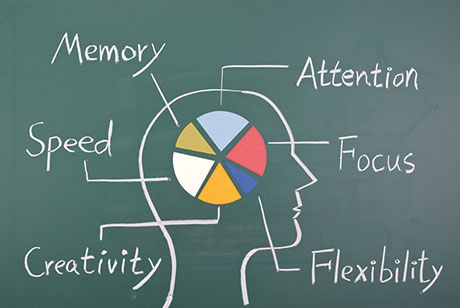
KINDS OF MEMORY
Short term and long term
There are various kinds of memory that we need for different purposes. In everyday life we tend to think mostly in terms of two types: short term and long term.
Short-term memory is what you need to remember a phone number in order to make a call. It relies heavily on what you hear and also possibly on what you see and maybe do (auditory and visual-spatial memory).
You might not remember the number immediately after the call, but years later you might still remember making that call if it had particular meaning to you. ‘Whereas short-term memory relies on sound and sight, long-term memory depends on meaning (semantics). Unless something makes sense, it cannot find its way into the long-term memory’ (Bruce, Meggit and Grenier 2010). This is really important when we think of the link between memory and children’s learning.
Working memory
An important aspect of short-term recall is working memory. This is often described as being like a mental ‘jotting pad’ or ‘workspace’ that we can use to store or hold important information in our heads while we do mental or other activities (Gathercole and Alloway 2007).
It’s more than just remembering that phone number and dialling it – it’s remembering the number while you hunt for a pen and paper to write it down, while someone else is talking to you.
Mental arithmetic often involves multiple activities like this, as does remembering directions (‘Take the first left, then next right, then the second exit on the roundabout’) or multiple instructions (‘Put the Lego in the box, put the box away in the cupboard and bring me that book’).
Capacity for working memory is limited in young children but increases as they grow older.
Attention plays an important part in working memory, and Gathercole and Alloway point out that distraction, trying to hold too much information at one time or engaging in a demanding task can all interfere with our capacity to hold information in our heads.
RETRIEVAL OF LONG-TERM MEMORY
Once a memory has been stored in the long-term memory, we retrieve it in different ways.
Recognition
Recognition is probably the easiest way, in that we are able to compare old information that has been stored against new information. Young children can be very good at this – for example, identifying pictures of things that they have been shown before (Brown and Campione 1972, cited in Talay-Ongan 1998).
Researchers have even been able to investigate the development of recognition in pre-verbal babies because of a process called habituation. In studies, it seems babies look longer at something new to them than at something familiar. If a baby spends less time looking at something that they have seen before, it is presumed it is because they remember it (Rose et al 2004).
Recall
Recall is a trickier form of retrieval, as it involves the ability to remember something that isn’t actually present, though possibly with the help of cues or hints. It seems to be present in one-year-olds who can find a hidden object (Herbert and Hayne 2000), although it becomes much more reliable as children grow older and the amount they can recall increases.
Good recall in young children seems to be linked with superior linguistic skills (Simcock and Hayne 2003), which seems to suggest that language may be important for building mental images of things that have happened in the past (Keenan and Evans 2009). This also suggests that long-term recall depends on good connections between different parts of the brain.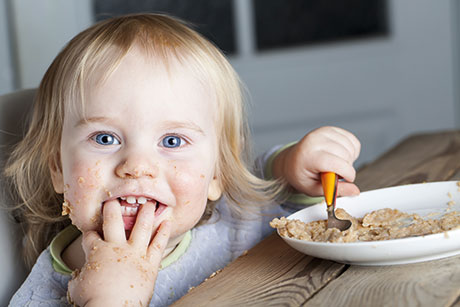
MEMORY SYSTEMS
Professor Usha Goswami (Nursery World, 5 October 2015) describes how memory involves different cognitive systems or ways of organising long-term memory:
- Semantic memory is our generic, factual knowledge about the world.
- Episodic memory is our ability consciously to retrieve autobiographical happenings from the past.
- These ‘can be brought consciously and deliberately to mind’ and are referred to as declarative memory.
- Implicit or procedural memory for habits and skills includes recognition and remembering how to do something (Goswami 2015).
- This is described as non-declarative memory and is largely unconscious and appears to be available to us from birth, whereas declarative memory takes time to develop.
DEVELOPMENT OF MEMORY
Although we see the beginning of memory developing in the womb (which newborns show us by reacting to their mother’s voice and other sounds they heard before they were born), the capacity for memory develops over time as children grow older.
Dr Lisa Oakes at the Infant Cognition Lab, University of California, points out that we see memory emerging in young babies as they begin to track objects and register that the cat which went behind the sofa is the same cat that came out the other side. But there is a limit to how much they can remember in this way, and she suggests this is possibly to ensure that babies don’t become overwhelmed by the vast amount of new information that they have to encounter every day.
Deferred imitation
Deferred imitation is another form of emerging baby memory that can be seen when we show a baby what to do with a toy and they repeat the action later, sometimes with a gap of several days or even weeks (Coila 2017).
By six to 12 months, babies will show recognition of familiar people and places as well as toys and will link emotional reactions to past experiences – for example, smiling when they see grandma but fussing at the health clinic where memories of vaccinations might linger.
After 12 months, words are likely to be linked with memorable associations (Coila 2017) – for example, saying ‘granddad’ when getting in the car if a car journey is linked with seeing a grandparent.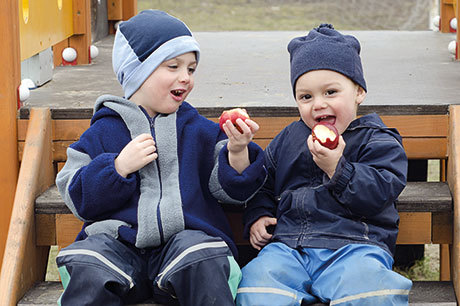
THE BRAIN AND MEMORY
The memory process is a complex function that starts with the input of a sensory stimulus and ends with the ability to independently retrieve the memory.
The part of the brain responsible for short-term memory is believed to be the pre-frontal cortex. The hippocampus is involved in consolidating short-term memories into long-term memories. For this to happen, a memory must pass through a hippocampal pathway many times, and it is this repetition that prevents the memory from being lost. It is stored in the cerebral cortex (Stannard 2011) independently of the hippocampus and can be retrieved when needed.
We use the terms memory span or memory capacity to describe the bank of memory or ‘innate reservoir of memory a child may have’ (Talay-Ongan 1998). And the more knowledge that a child has in their memory bank of meaningful experiences, the more ‘anchor points’ they have for bringing meaning to new information and ultimately remembering it (Keenan and Evans (2009).
Routines and repetitions
Usha Goswami describes how children’s episodic memory develops well through routine and the ‘scripts’ children create around repeated routines and events in everyday life – for example, getting dressed, having breakfast, going to Granny’s. ‘Scripts are essentially the way in which we structure and represent our memories of reality’ (Goswami 2015).
Scripts help us organise our experiences of the world into a ‘predicable framework’, which in turn enables us to develop a better memory for what is new and unfamiliar. ‘Novel events can be tagged in memory as departures from the expected script’ (Goswami 2015).
Families and friends help children develop their memory scripts by refreshing events through recollection and discussion and by encouraging children to recall them through questioning and elaboration. This helps build a personal autobiographic history, which is important not only in the development of a sense of ‘self’ in the context of one’s family, but also in a social context where relationships with peers are deepened as children share their memories with each other.
Later, as adults, reminiscing helps cement relationships within communities and social groups, although research suggests that ‘self stories’ are assigned greater levels of importance in Western society than in others – for example, Asian cultures (Goswami 2015).
Infantile amnesia
Despite all this evidence of early memory development, in general, we tend to find it difficult to remember much before the age of three, and what we do recall can be hazy and fragmentary. Psychologists refer to this as ‘infantile amnesia’.
There is much debate as to whether this is an issue with memory storage or with retrieval. Research has suggested possible links with emotion and stress, as well as the part played by language acquisition in the recall of early memories, but the question remains unresolved.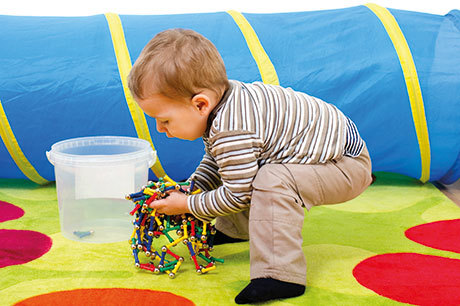
THE IMPACT OF MEMORY ON LEARNING
‘The organising framework for children’s development is based on the creation of memories’ (Child Welfare Information Gateway 2015). Children make connections with previous experience in their play, laying down new memories and reinforcing neural pathways.
Both short- and long-term memory is very important as a child builds up their ‘knowledge base’ and their sense of who they are and how they fit into the world. Everyday life skills are much easier if you can remember things, and exams and tests depend on being able to recall information, often without cues or context to help with memory retrieval.
Working memory in particular becomes increasingly important as children work their way through school and, according to recent studies, early acquisition of visuospatial working memory can be an indicator of later achievement in maths (Li and Geary 2013; Li and Geary 2017).
Working memory is also linked to language skills (for example, the ability to keep track of the ideas presented in a long or complex sentence (Zhou et al 2017). Gwen Dewar points out that working memory seems to be a basic component of fluid intelligence in that it can affect how children learn, but is also very clear that we can’t equate working memory with overall intelligence (Dewar 2017).
What if it doesn’t develop well?
Children are constantly being exposed to new and unfamiliar information and experiences. When children find it hard to sustain attention and are easily distracted, they tend to ‘tune in and out’ of what’s being said to them or is going on around them.
Being easily distracted is a result of poor inhibitory control, which is an executive function of the brain and develops over time as children mature. Working memory is also an executive function and is linked to the development of this inhibitory control that allows us to shut out distractions so that we can concentrate on what we are trying to remember.
Although children do not fully acquire executive functions until they are older, the effects of their early experiences can play a large part in how well these functions of the brain develop. This is because they are linked to the quality of our early co-regulation experiences, when our needs were met and our emotions soothed with love and affection by our primary caregivers.
Also key to the development of executive functions is the quality of stimulation we received as infants – which should be neither too much nor too little, but tuned to the individual needs of the child and their changing contexts. Adoptive parents and carers of children in public care frequently find that their children have issues with working memory, and studies suggest there are links between adult working memory and childhood stress and adverse circumstances (for example, Evans and Schamberg 2009). Other studies suggest that the impact of early adverse circumstances on the hippocampus may play a part in this (McCrory, De Brito and Viding 2010; Wilson, Hansen and Li 2011).
Difficulties with short-term and working memory affect our ability to sustain the mental effort to absorb information accurately, which ensures it is committed correctly to long-term memory when required. Children with short-term memory issues may find it hard to remember what they’ve just been told, to follow instructions or to commit to long-term memory something that they seemed to have understood yesterday. But it isn’t that they aren’t trying hard enough.
It’s also worth remembering that memory capacity in young children takes time to develop (particularly working memory), which is one of the reasons why formal tests at an early age are not good indicators of children’s learning ability.
Supporting memory development
- Practical first-hand experience is a primary way of reinforcing memory and learning. Having the opportunity to do things for themselves builds neural pathways and creates memories that inform future learning.
- Nursery rhymes and familiar stories help build expectation and reinforce memory through playful repetition.
- Actions, signing, physical activity and movement also increase the likelihood of remembering.
- Make visual calendars and timetables and play ‘what comes next?’ games with daily routines as well as familiar stories.
- Repetition is important, but it needs to be meaningful to the child. It’s not about drilling – it’s the child’s urge for ‘again, again’ that makes the difference.
- Play memory games for fun and which are matched to children’s developmental level.
- Reconstruct past events with children, describing and elaborating upon them.
- Prompt children to recall experiences, but with genuine interest and curiosity. Focus on the little details that are likely to interest and intrigue them.
- Use music, rhyme and rhythm to reinforce new information, safety rules and other things you want them to remember.
- Help children to visualise by ‘making pictures in their mind’ when listening to stories or talking about events.
- Match the complexity of instructions with the child’s level of development and increase gradually.
- Organise resources so that there is a place for everything and make tidy-up time a fun challenge to remember where everything goes.
- Sharing with children your own strategies for remembering things introduces them to metacognition or ‘thinking about thinking’. Show them how you make lists, practise new skills, and memorise information and ‘think aloud’ as you go through memory retrieval.
- Allow yourself to ‘forget’ things and encourage the children to remember for you!
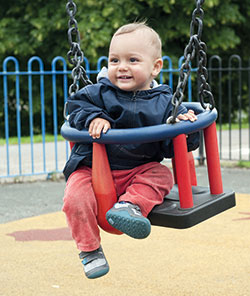
REFERENCES AND FURTHER READING
Talay-Ongan A (1998) Typical and Atypical Development in Early childhood. BPS Books
Brown AL and Campione JC (1972) ‘Recognition memory for perceptually similar pictures in pre-school children’, Journal of Experimental Psychology, 95 (1), 55-62
Bruce T, Meggit C and Grenier J (2010) Child Care and Education. Hodder Education
Keenan T and Evans S (2009) An Introduction to Child Development. 2nd edn. Sage Publications
Rose SA, Feldman JF and Jankowski JJ (2004) ‘Infant visual recognition memory’, Developmental Review, 24 (1), 74-100
Goswami U (2015) ‘I remember’, Nursery World, 5 October 2015
Goswami U (2015) Children’s Cognitive Development and Learning. Cambridge Primary Review Trust
Gathercole SE and Alloway TP (2007) Understanding Working Memory. A Classroom Guide. Available at: www.mrc-cbu.cam.ac.uk/wp-content/uploads/2013/01/WM-classroom-guide.pdf
Oakes L (undated) Infant Memory Development. Available at: http://oakeslab.ucdavis.edu/infant-memory-development.html
Coila B (2017) Memory Development in Babies. Available at: www.livestrong.com/article/95646-memory-development-babies
Evans GW and Schamberg M (2009) Childhood poverty, chronic stress, and adult working memory. Available at: www.pnas.org/content/106/16/6545.full?sid=7362998f-ec72-425a-9f8d-4e66ddbd7a61
Li Y and Geary DC (2013) Developmental Gains in Visuospatial Memory Predict Gains in Mathematics Achievement. PLOS One, http://journals.plos.org/plosone/article?id=10.1371/journal.pone.0070160
Li Y and Geary DC (2017) Children’s visuospatial memory predicts mathematics achievement through early adolescence. PLOS One, http://journals.plos.org/plosone/article?id=10.1371/journal.pone.0172046
Zhou H, Rossi S and Chen B (2017) ‘Effects of Working Memory Capacity and Tasks in Processing L2 Complex Sentence: Evidence from Chinese-English Bilinguals’, Frontiers in Psychology, 20 (8), 595
McCrory E, De Brito SA and Viding E (2010) ‘Research review: The neurobiology and genetics of maltreatment and adversity’, Journal of Psychology and Psychiatry, 51, 1079-1095
Wilson KR, Hansen DJ and Li M (2011) ‘The traumatic stress response in child maltreatment and resultant neuropsychological effects’, Aggression and Violent Behavior, 16 (2), 87-97
Child Welfare Information Gateway (2015) Understanding the Effects of Maltreatment on Brain Development. US Department of Health and Human Services, Children’s Bureau. Available at: https://www.childwelfare.gov/pubs/issue-briefs/brain-development
Dewar G (2015) Working memory in children, Parenting Science, www.parentingscience.com/working-memory.html
Stannard L (2011) Parts of the Brain Involved in Memory. Available at: www.livestrong.com/article/75693-parts-brain-involved-memory









